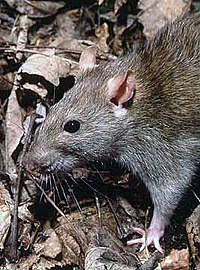
Photo from wikipedia
PurposeMitochondrial dysfunction plays an important role in the development of obesity and obesity-associated metabolic diseases.MethodsIn this study, we dynamically observed the characteristics of mitochondrial damage in a rat model of… Click to show full abstract
PurposeMitochondrial dysfunction plays an important role in the development of obesity and obesity-associated metabolic diseases.MethodsIn this study, we dynamically observed the characteristics of mitochondrial damage in a rat model of diet-induced obesity (DIO). From the 2nd to the 10th week, animals were killed every 2 weeks and the heart, liver, kidney, and testicular tissues were harvested. Mitochondria were isolated and the activities of respiratory chain complexes I, II, III, and IV as well as the 8-Hydroxy-2-deoxy Guanosine content were determined. Reactive oxygen species and malondialdehyde were measured.ResultsMitochondrial damages were observed in the heart and liver of DIO and DR rats, and the damages occurred later in DR group than that in DIO group. The mitochondrial membrane potential of heart and liver decreased in DIO and DR groups. The activity of the heart mitochondria complexes I, III, and IV (composing NADH oxidative respiratory) was higher in the early stage of DIO and lower in the end of week 10. The higher activity of the liver complexes I, III, and IV was found until the end of week 10 in DIO and DR groups, accompanied with enhanced oxidative stress. Besides, mitochondrial DNA damages were observed in all tissues.ConclusionIn DIO rats, the heart mitochondrial dysfunction occurred first and the liver presented the strongest compensatory ability against oxidative stress.
Journal Title: European Journal of Nutrition
Year Published: 2017
Link to full text (if available)
Share on Social Media: Sign Up to like & get
recommendations!